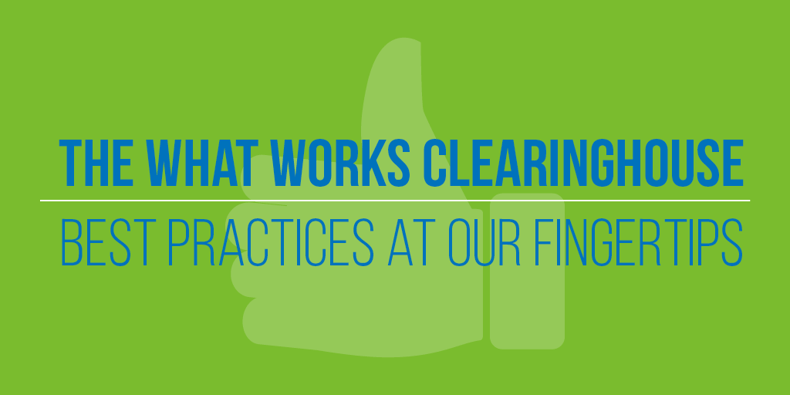
Good educators are constantly searching for best practices in the classroom. The term “best practice” can get thrown around a lot by different organizations, parents, teachers, and especially administrators. In the end, it can be hard to determine which “best practices” are the ones we really need to implement.
This can be especially true when it comes to different curricula, resources, and textbooks. These can be heavily marketed and, as a result, it is sometimes hard to discern which are really going to yield the best results for our students.
Easy Access to Proven Practices
Fortunately, the US Department of Education created the What Works Clearinghouse. This is a database of sorts of all the best practices and current research supporting many different subject areas. Some of the highlights of the site are intervention, curriculum, and best instructional practices.
There is a short, four-minute video that can be found here if you are interested in getting the tutorial. There are a few other videos within the site that are helpful, but I would suggest starting with the tutorial. I have found that the site is pretty easy to navigate, so jumping right in works as well.
There are a few different ways you can approach finding research on the site:
- Subject area topics: There are 12 different subject areas that are listed at the top of the main page. By clicking on any of these, you can pull up the broadest view of the topic and all the different research articles listed. For some of these, the lists are quite lengthy, but just poking around can be interesting.
- Search bar: If there is a specific word, listing, or product you are looking for, simply type it into the search bar at the top of the main page. It is probably worth clicking through the site a little bit before doing that just to see the types of things that are provided. The site does have a complete list of every textbook or resource ever created, but it focuses on many of the common ones that have been around for a while. Every year, the database grows as more research studies take place.
- Filtering for more specific content: One of the coolest features of the site is the “Find Research for Students Like Yours” button. This comes up once one of the twelve main subject headings is clicked and allows the user to filter for different demographic components of the school, such as race, urban/rural, and poverty.
- Practice guides: The practice guides are like resource guides that include many best practices in a given topic area. For example, if you are interested in decreasing dropout rates, there is a guide for some of the research-based ways to decrease that rate. If you want to improve how students perform on fractions or early literacy, there are guides for those as well. I have used the math intervention guide as a tool for our RTI team to work through. There are some resources provided in the guide, but most of it centers around the best strategies and tools to make a difference.
- Digging in: Once you have looked around and found the topic you would like more information on, you can drill down and dig into the research. You don’t have to be an expert in statistics to understand the charts and data. After clicking on the link to the resource, a page comes up with a list of the number of studies that have been completed about the topic. There is also a downloadable PDF of the research itself. You can see the area of the country where the data was collected, the type of school (urban/rural, etc.), the delivery method of the content, and even the number of students who were part of the study. This may seem a tad overwhelming at first, but the graphic display is very user-friendly and readable.
- Help desk: Finally, there is a help desk section with people on the other end that can help you navigate and find information. This is handy, but is also further evidence that this is an active website with constant updates. This isn’t something static with information that is old or irrelevant.
Every educator at every level can find some good, relevant information within the site. The search for best practices can be tricky at times, and this site is an excellent tool to help make sense of it all.
Want more resources and best practices from using mobile devices in the classroom to collaborative learning? Check out Boxlight’s free guides.>>



